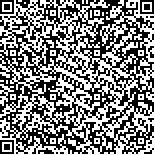| 摘要: |
| [摘要] 目的 构建华通胶(WJ)修饰的聚己内酯(PCL)静电纺丝人工血管支架,并分析其性能。方法 采用胰蛋白酶法对WJ组织进行脱细胞处理,通过组织学染色和生化成分定量分析WJ组织的脱细胞效率,以及脱细胞前后WJ组织生化成分的差异。通过酶联免疫吸附试验(ELISA)法检测脱细胞前后WJ组织生物活性因子的水平差异。将经过处理的WJ与PCL混合制备纺丝液,并采用静电纺丝技术制备管状的WJ/PCL静电纺丝人工血管支架,分析其纳米纤维结构、纤维直径分布、生物力学性能及血液相容性。结果 通过胰蛋白酶法脱细胞处理可有效去除WJ基质的细胞核成分,保留了WJ基质的大部分生化成分[包括糖胺聚糖(GAG)、蛋白质、纤维、透明质酸和羟脯氨酸]以及生物活性因子[包括血管内皮生长因子(VEGF)、血小板源性生长因子(PDGF)、转化生长因子-β1(TGF-β1)和成纤维细胞生长因子-2(FGF-2)]。经静电纺丝技术制备的WJ/PCL静电纺丝人工血管支架呈现典型的纳米纤维结构,且经傅立叶红外光谱(FTIR)验证,其同时含有WJ和PCL的特征峰。WJ/PCL静电纺丝人工血管支架表现出良好的生物力学特性和血液相容性,可有效抑制血小板黏附。结论 WJ是一种理想的天然材料,可用于与PCL等合成材料复合,制备具有理想生物特性的静电纺丝人工血管支架。 |
| 关键词: 华通胶 静电纺丝 复合生物支架 人工血管 |
| DOI:10.3969/j.issn.1674-3806.2024.02.10 |
| 分类号:R 318 |
| 基金项目:苏州大学研发项目(编号:H220142) |
|
| Construction of Wharton′s jelly-modified polycaprolactone electrospinning artificial blood vessel scaffolds and analysis of their performances |
|
HE Fangling, JIANG Tingbo
|
|
Department of Cardiovascular Medicine, the First Affiliated Hospital of Soochow University, Jiangsu 215006, China
|
| Abstract: |
| [Abstract] Objective To construct Wharton′s jelly(WJ)-modified polycaprolactone(PCL) electrospinning artificial blood vessel scaffolds and to analyze their performances. Methods The WJ tissues were decellularized by using trypsin method, and histological staining and biochemical component quantification analysis were employed to analyze the efficiency of WJ tissue decellularization and the differences in the biochemical components of the WJ tissues before and after decellularization. Enzyme-linked immunosorbent assay(ELISA) was used to detect the differences in the levels of bioactive factors of the WJ tissues before and after decellularization. The processed WJ was mixed with PCL to prepare spinning solution, and the electrospinning technique was utilized to fabricate tubular WJ/PCL electrospinning artificial blood vessel scaffolds, and their nano-fiber structures, fiber diameter distributions, biomechanical properties and blood compatibilities were analyzed. Results Trypsin-based decellularization effectively removed cellular nuclear components from WJ matrix, preserving most of the biochemical components of the WJ matrix[including glycosaminoglycan(GAG), proteins, fibers, hyaluronic acid, and hydroxyproline] and the bioactive factors of the WJ matrix[including vascular endothelial growth factor(VEGF), platelet-derived growth factor(PDGF), transforming growth factor-beta 1(TGF-β1), and fibroblast growth factor-2(FGF-2)]. The electrospinning WJ/PCL artificial blood vessel scaffolds prepared by the electrospinning technique exhibited a typical nano-fiber structure, and their characteristic peaks of both WJ and PCL were verified by Fourier-transform infrared spectroscopy(FTIR). WJ/PCL electrospinning artificial blood vessel scaffolds demonstrated good biomechanical properties and blood compatibilities, effectively inhibiting platelet adhesion. Conclusion WJ is an ideal natural material that can be used in combination with synthetic materials like PCL to prepare electrospinning artificial blood vessel scaffolds with desirable biological properties. |
| Key words: Wharton′s jelly(WJ) Electrospinning Composite bio-scaffold Artificial blood vessel |

